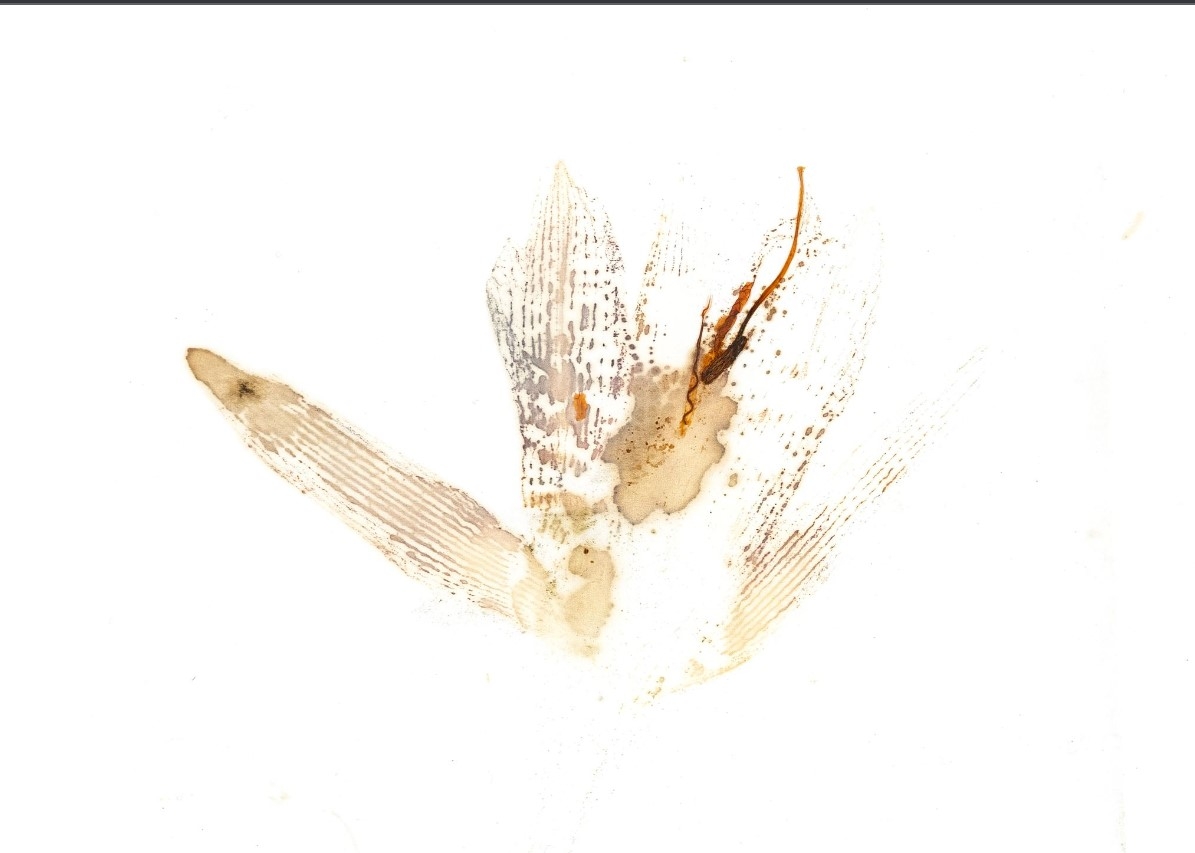In direct contact with nature’s infinite change, unpredictable nuances of light and atmosphere, which touch the emotional and intellectual state of the creator, I look for the impact of nature on the creator / myself through the painter’s view of nature. Immersed in the natural elements, delving into the relationship between the painter and the creation, I find the possibility to paint in nature in my artistic quests. A transformation takes place. Traditional paints – watercolour, acrylic, oil, pastel – are replaced by vegetation: flowers, berries, leaves, mushrooms, etc. The relationship between the painter and nature shifts from looking at nature to painting with nature itself. Nature becomes the main and most important element in the creation of paintings, returning to the origins and offering a new form of creativity. This new creative plasticity, the transformation of painting, the revealed mysteries of novelty – this is a changing story, using one’s feeling, intuition, experience. The fascination with the versatility of nature in the creative process is mesmerizing. The trail of rubbed flowers on the paper is ultimately enslaving. I am learning to be silent when nature speaks. I gather my brushes and paints in the meadow: flower blossoms. I take the one brush that nature gave me and brush it across a white sheet of paper. I twist, apply, rub. Nature itself is absorbed into the paper, giving all of itself. When converting a living work to another medium, I choose to explore the mark each plant leaves on paper. This is my tribute to nature. This is how I experience the spiritual prose of nature. Each picture is the face of a different plant. Petal painting is an intuitive, instant creation, without complicating it with sophisticated, thought-out, or structured compositions. The dimension of time also comes into play: how the work will change over time is almost impossible to think about.
EPHEMERAL IMPRINT is artistic research that has been going on for two years, started at the beginning of 2021 as soon as the first flowers bloomed. Currently, over a hundred flowers growing in Lithuania have already been tested.




